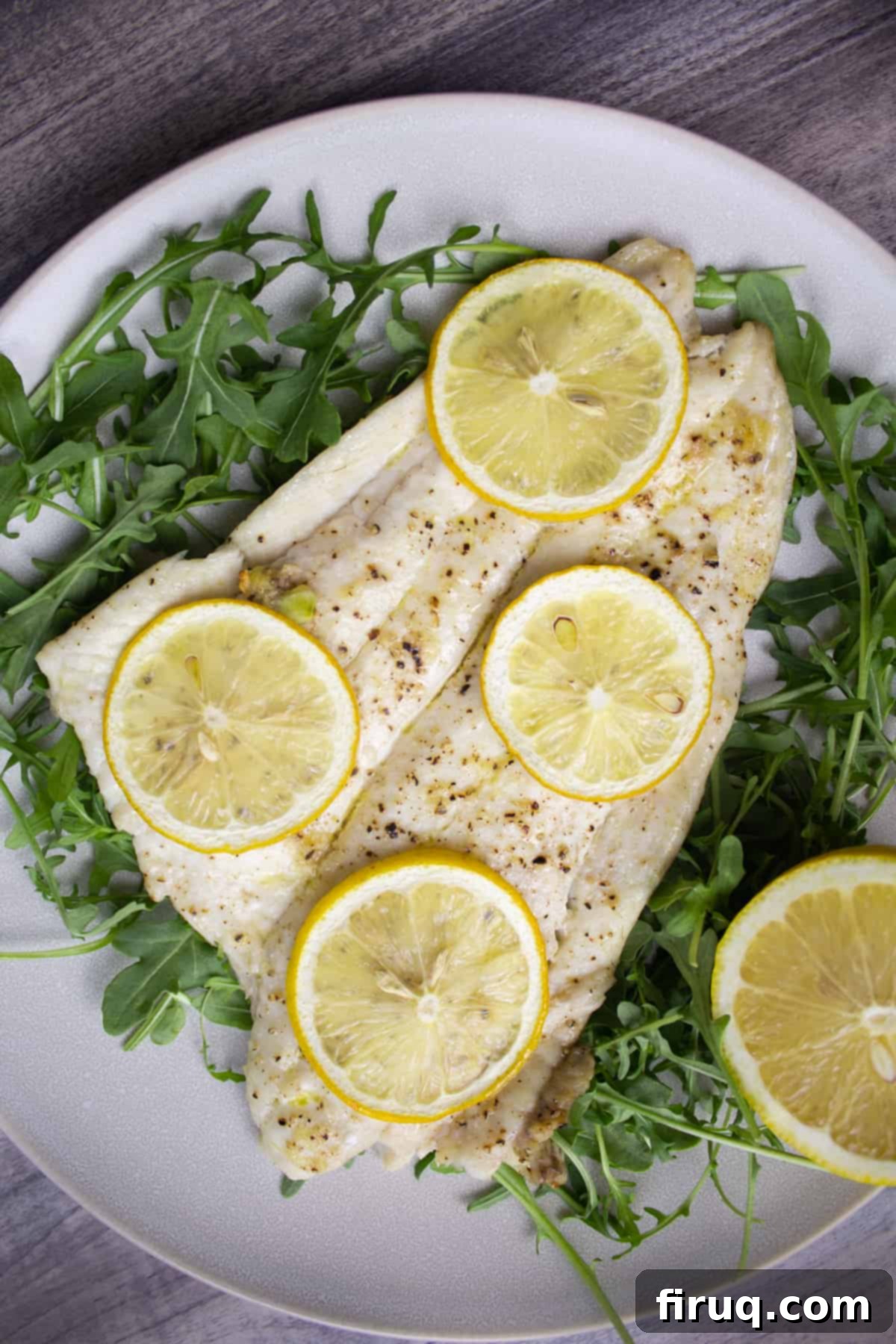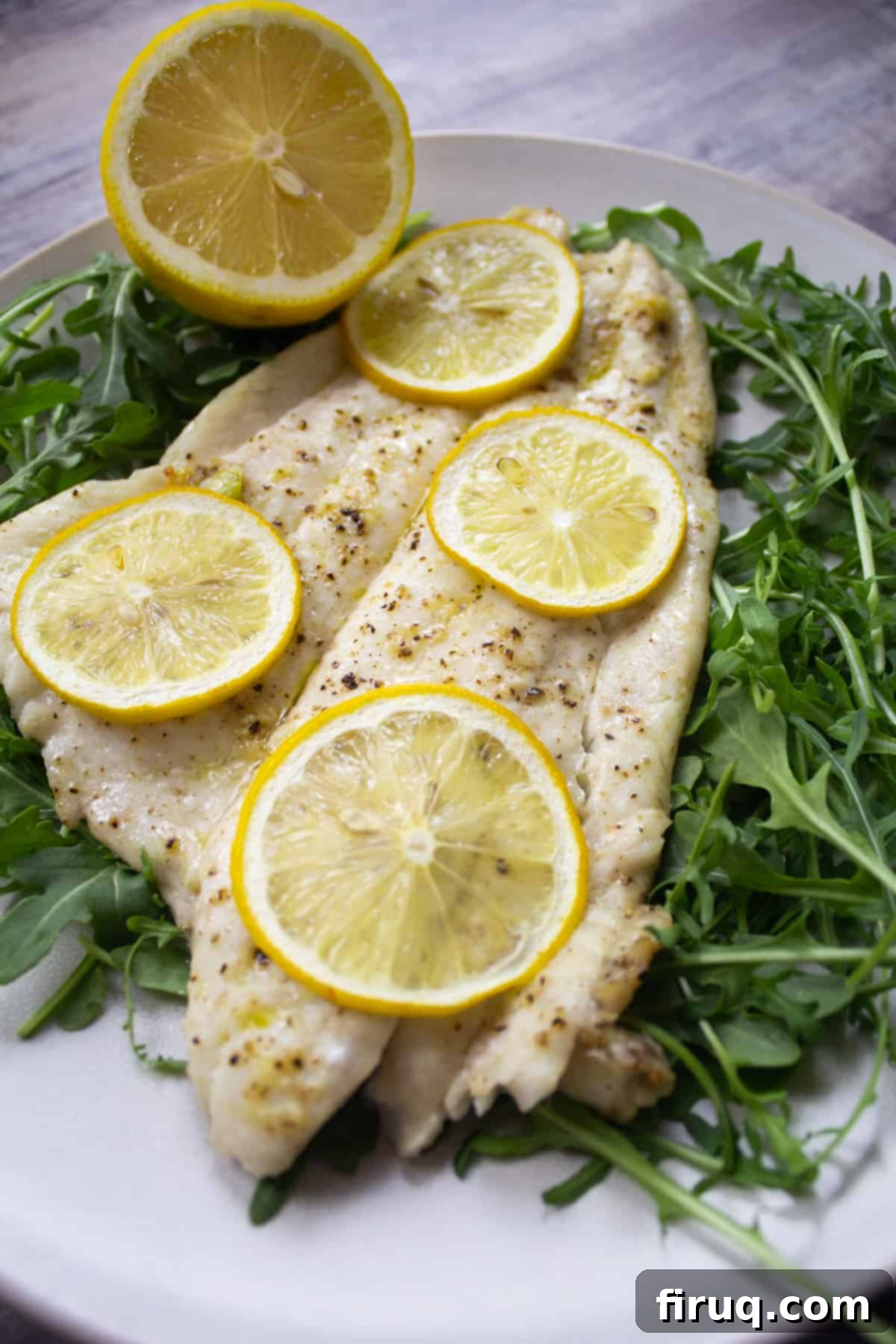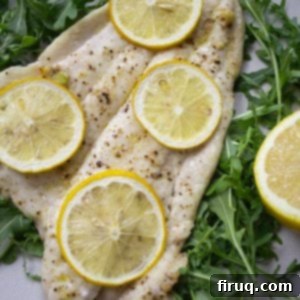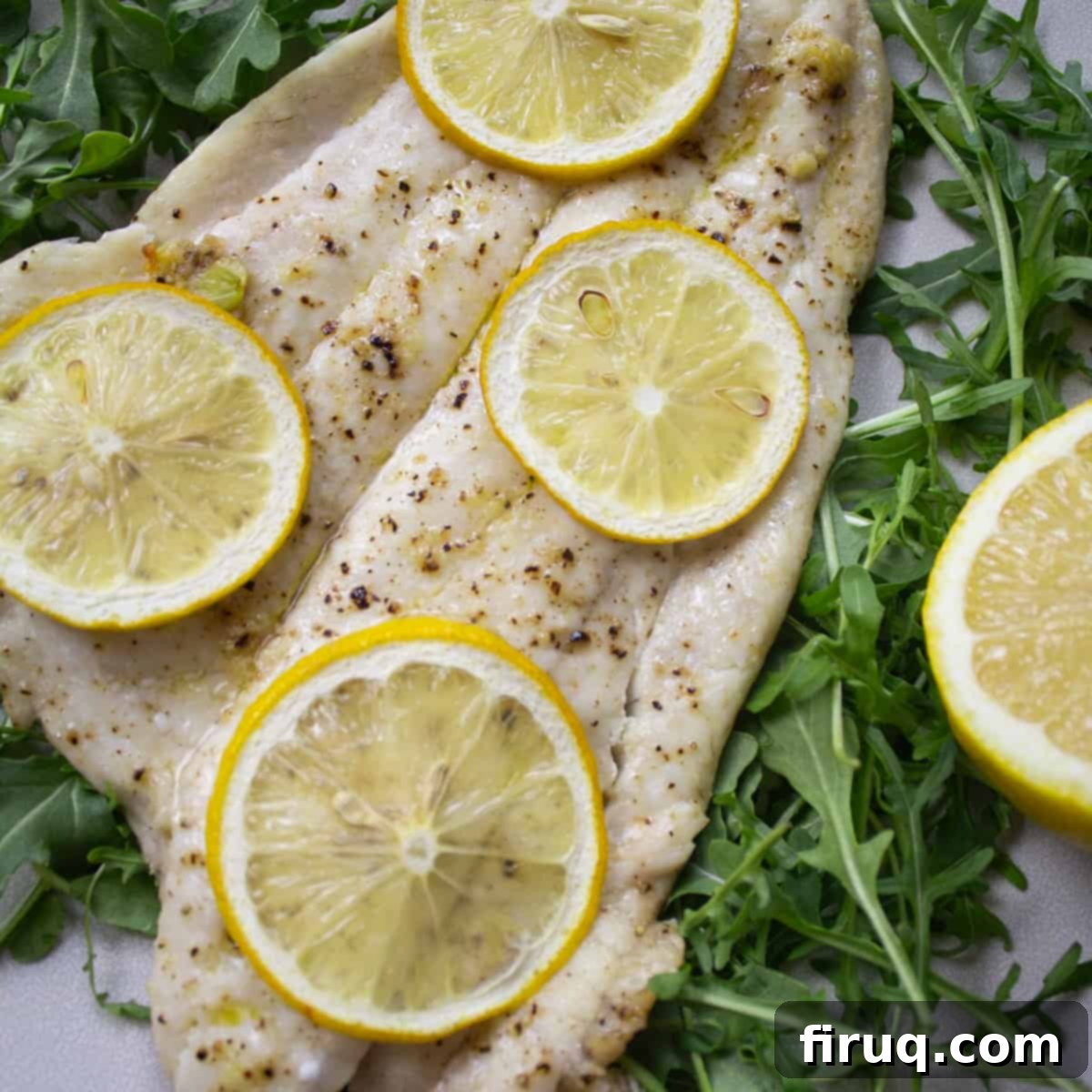Easy Lemon Garlic Broiled Flounder Recipe: Master Perfect Flaky Fish Every Time
Are you hesitant when it comes to cooking fish? Many home cooks shy away from preparing seafood, fearing it might turn out dry, rubbery, or simply unappetizing. We understand that feeling – no one wants to invest in fresh ingredients only to be disappointed with the final taste. But what if we told you that achieving perfectly cooked, moist, and incredibly flavorful fish is not only possible but surprisingly easy, even if you’re a complete novice?
This comprehensive guide will walk you through everything you need to know to create a show-stopping **lemon garlic broiled flounder**. This isn’t just a recipe; it’s a foundational lesson in mastering delicate fish, ensuring your end product is consistently tender, flaky, and bursting with bright, savory notes. Get ready to banish your fish-cooking fears and welcome a delicious, healthy, and quick seafood meal into your rotation!

If you’re eager to explore more delightful seafood creations, don’t miss our fantastic recipes for pan-seared snapper or our unique pistachio-crusted sea bass.
The single most critical factor in achieving culinary success with fish is knowing precisely when it’s done. Unlike chicken or beef, which many of us cook regularly, fish often feels like a special occasion purchase, something we prepare only once in a while. This infrequent experience can make it challenging to gauge doneness by sight or feel alone. But fear not – we’re here to demystify the process.
My partner, Marisa, and I have been on a journey to incorporate more diverse proteins into our diet, moving beyond the usual chicken and red meat. This exploration has led us to discover the incredible world of seafood, and flounder quickly rose to the top of our favorites list. Learning to cook fish properly has opened up a whole new realm of delicious, healthy, and exciting meals, and broiled flounder is an absolute cornerstone of that journey.
Flounder is celebrated for its delicate texture, becoming wonderfully moist and flaky when cooked correctly. It boasts a mild, almost sweet flavor, making it a fantastic canvas for absorbing seasonings like lemon and garlic. Crucially, it cooks incredibly fast, often in under 5 minutes under the broiler! If you’re looking for a white fish that doesn’t have an overpowering “fishy” taste, flounder is an excellent choice and a perfect starting point for any seafood enthusiast.
How Do I Know When the Fish is Finished Cooking? The Secret Weapon.
For anyone embarking on their fish-cooking adventure, there’s one essential tool that will transform your results from good to consistently perfect: an instant-read thermometer. This inexpensive gadget, typically ranging from $20 to $40, is the single best investment you can make in your kitchen. It eliminates guesswork and ensures you’ll never again serve a dry, overcooked piece of fish.

While most of us instinctively know when chicken is cooked through or ground beef is browned, fish often presents a unique challenge. Its delicate nature means it cooks rapidly, and even an extra minute or two under the broiler can transform a moist, flaky fillet into a dry, tough disappointment. This is where the thermometer becomes invaluable. The FDA recommends cooking fish to an internal temperature of 145°F (63°C). At this temperature, the fish will be opaque throughout and flake easily with a fork.
I personally rely on my instant-read thermometer every single time I cook fish. It removes all doubt and ensures that every fillet I serve is consistently delicious and cooked to perfection. There’s no need to pretend you can “read the fish’s mind” when a simple tool provides precise, undeniable accuracy. Trust the thermometer, and you’ll always have a moist, flaky result.
Ingredient Notes and Substitutions: Choosing the Best for Broiled Flounder
This lemon garlic broiled flounder recipe shines because of its simplicity and reliance on fresh, high-quality ingredients. While there aren’t many substitutions needed for the core flavor profile, let’s dive into some specifics to ensure your dish is truly exceptional:
- Flounder Fillets: The star of our dish! Whenever possible, opt for **fresh flounder fillets** over frozen. Fresh seafood cooks more predictably and generally yields a superior texture, which is especially important for beginners. When purchasing, look for firm, translucent flesh with a mild, clean scent. You might find flounder with or without skin. Both are perfectly fine for broiling. The skin, when crisped under the broiler, can be wonderfully tasty and packed with nutrients. If you can’t find flounder, excellent alternatives with similar delicate textures include halibut, sole, or striped bass.
- Lemon: Fresh lemon is non-negotiable here. The bright, acidic notes complement the mild flounder beautifully and activate the garlic’s flavor. Thin slices placed on top while broiling gently infuse the fish, while a fresh squeeze at the end adds a vibrant finish.
- Garlic: Fresh garlic is key for that pungent, aromatic punch. We recommend grating or pressing the garlic for maximum flavor distribution. This technique allows the garlic to meld seamlessly with the olive oil and adhere to every part of the fillet.
- Olive Oil: A good quality extra virgin olive oil not only helps conduct heat and prevent sticking but also adds a subtle richness to the fish.
- Salt and Pepper: Simple yet essential. Use freshly cracked black pepper and a good quality sea salt or kosher salt. Season generously, as flounder is mild and benefits from proper seasoning.
Making Lemon Garlic Broiled Flounder: A Step-by-Step Guide
What makes this flounder recipe truly fantastic is how effortlessly it comes together. It’s a testament to simple ingredients yielding profound flavors. With minimal prep and a speedy cooking time, you’ll have a gourmet-tasting meal on the table in under 30 minutes.
Preparing Your Flounder for Perfection
- Rinse and Pat Dry: Begin by gently rinsing your flounder fillets under cold water. This helps remove any loose scales or debris. Crucially, then pat them thoroughly dry with paper towels. Removing excess moisture is vital for achieving a good sear (if pan-searing) or ensuring seasonings adhere properly and the fish cooks evenly under the broiler. Place the dried fillets on a large baking pan.
- Oil Application: Lightly coat both sides of each fillet with olive oil. About one teaspoon per average-sized fillet is usually sufficient. This not only adds flavor but also helps the seasonings stick and prevents the fish from drying out.
- Garlic Infusion: Here’s a trick for maximum garlic flavor: instead of thinly slicing or mincing, **grate fresh garlic** directly onto the fish. Use about one clove per fillet. Then, gently rub the grated garlic all over both sides of the fillet. Grating creates a fine paste that distributes evenly and really infuses the fish with its aromatic goodness. If you don’t have a grater, pressing the garlic with a garlic press is a good alternative.
- Season Generously: Season both sides of your flounder fillets with a generous amount of salt and freshly ground black pepper. Remember, flounder has a delicate flavor, so don’t be shy with the seasoning; it will enhance the natural taste without overpowering it.
- Lemon Topping: Finally, adorn each fillet with very thin slices of fresh lemon. These slices will gently impart a subtle, refreshing citrus aroma and flavor to the fish as it broils.
Broiling Flounder to Tender Perfection
- Preheat the Broiler: This step is critical. Move an oven rack to the second-lowest position, about 6-8 inches from the broiler element. Then, preheat your oven to the broil setting. Allow it to preheat for at least 8-10 minutes. Unlike baking, your oven often won’t beep when the broiler is fully preheated, so give it ample time to get intensely hot. A scorching hot broiler ensures a quick, even cook and a beautiful golden finish.
- Broil Rapidly: Carefully place the baking tray with your seasoned flounder into the preheated oven. Broil for a very short duration, typically 4-5 minutes.
- Monitor Temperature Closely: This is where your instant-read thermometer earns its keep! At the 4-minute mark, check the internal temperature of the thickest part of the smallest fillet. Once a fillet reaches 145°F (63°C), immediately remove it from the oven. Continue checking each individual fillet, pulling them out as soon as they reach the target temperature.
Why such vigilance? Fish cooks incredibly fast under the high heat of a broiler. In just 5 minutes, a flounder fillet can go from a chilly 34°F to a perfectly cooked 145°F – that’s a temperature increase of approximately 22°F per minute! An extra minute or two beyond 145°F can rapidly dry out and ruin the delicate texture of the fish. Using an instant-read thermometer guarantees you’ll serve moist, flaky, and delicious white fish every single time.
Serving Your Delicious Broiled Flounder
Once your flounder is perfectly broiled, the presentation is almost as important as the taste. For a light and vibrant meal, serve the tender flounder fillets over a bed of fresh arugula. Drizzle the arugula with a touch of olive oil and a fresh squeeze of lemon juice for an added burst of flavor. Before serving, discard the cooked lemon slices from the top of the flounder and add fresh lemon wedges for guests to squeeze over their portion.
Flounder pairs wonderfully with a variety of sides. Some of our favorites include fluffy white jasmine rice or a luxurious Creamy Cherry Tomato Risotto. For a complete and balanced meal, consider a fresh vegetable side like Garlic Parmesan Green Beans or a rustic Italian Lacinato Kale (Tuscan). The mildness of the fish allows these flavorful sides to truly shine.
How to Reheat Flounder Without Drying it Out
Reheating fish often gets a bad rap, and historically, I was vehemently against it. However, I’ve found that the better the fish is cooked initially (i.e., not overcooked!), the more successfully it reheats. While freshly cooked fish is always best, sometimes you have delicious leftovers. Here are the best ways to reheat your lemon garlic broiled flounder:
- Microwave Method (for quick reheating): The easiest and quickest way is in the microwave. Place the flounder on a microwave-safe plate, cover it loosely to retain moisture, and heat in 20-second increments. Check the internal temperature (yes, use your instant-read thermometer again!) until it reaches 145°F. The key here is gentle, gradual heating to avoid overcooking. If your fish was perfectly cooked the first time, this method should not dry it out.
- Pan-Frying Method (for a crispy edge): If you prefer a slightly crisper texture, reheat your flounder in a pan. Melt a small amount of butter or olive oil in a non-stick skillet over medium-low heat. Place the flounder in the pan and gently pan-fry each side for 1-2 minutes, or until warmed through to 145°F. This method can add a lovely golden, slightly crisp edge to the fish.
While reheating won’t quite match the “just-cooked” experience, by carefully controlling the temperature, you can enjoy delicious leftovers. Lemon garlic broiled flounder will stay fresh and flavorful in an airtight container in the refrigerator for up to 3 days.
FAQs About This Lemon Garlic Broiled Flounder Recipe
Absolutely! Broiling is one of the best methods for cooking delicate white fish like flounder. The high, direct heat quickly brings the fish to its ideal internal temperature (145°F) without prolonged exposure that can dry it out. As long as you monitor the temperature with an instant-read thermometer, your flounder will come out perfectly moist, flaky, and delicious.
Broiled flounder pairs wonderfully with light, fresh sides. A bed of peppery arugula with a lemon-olive oil dressing is a classic choice. Other excellent options include roasted asparagus, steamed green beans, a simple garden salad, fluffy jasmine rice, quinoa, or a creamy risotto. The mild flavor of flounder makes it incredibly versatile.
Yes, you can use frozen flounder, but it’s crucial to thaw it completely before cooking. Transfer the frozen fillets to the refrigerator the night before, or use the cold water thawing method if you’re short on time. Ensure the fish is thoroughly patted dry after thawing to remove excess moisture, which can lead to a less desirable texture when broiled.
While lemon and garlic are a fantastic combination, flounder’s mild flavor makes it adaptable to many seasonings. You could try fresh dill, parsley, or chives for an herbaceous touch. A sprinkle of paprika, a pinch of cayenne for a bit of heat, or even a dash of Old Bay seasoning would also be delicious. Butter instead of olive oil can add richness, or try a splash of white wine for added depth.
Explore More Delicious Seafood Recipes!
If you’ve enjoyed mastering this easy lemon garlic broiled flounder, we encourage you to broaden your seafood horizons even further! Our collection of recipes offers something for every palate and skill level. Here are a few more tempting options to inspire your next culinary adventure:
- Steamed Mussels in White Wine
- Cast Iron Lemon Dill Salmon
- The Best Homemade Shrimp Cocktail
- Italian Stuffed Baked Clams
We truly hope this guide empowers you to cook fish with confidence and joy. If you’ve tried and loved this lemon garlic broiled flounder recipe, please take a moment to leave a review below – your feedback means the world to us! Don’t forget to follow us on Instagram @vindelgiudice and share your delicious creations by tagging us. Most importantly, continue to enjoy homemade foods with your family, nourishing your body with every delightful bite!
📖 Recipe

Lemon Garlic Broiled Flounder
Vincent DelGiudice
Pin Recipe
Equipment
-
1 instant-read thermometer
Ingredients
- 4 flounder filets
- 1 lemon, sliced thinly
- 4 cloves garlic pressed or grated
- salt
- pepper
- 4 teaspoon olive oil
Instructions
-
Preheat the oven to the broiler setting and lower the rack down to the second lowest tier, about 6-8 inches from the heat source. Rinse the flounder under cold water and then pat thoroughly dry with paper towels. Place the dried fillets on a large baking tray.
-
Use about one teaspoon of olive oil per fillet (adjust based on the size of your fillets) to lightly coat both sides of the flounder. Season both sides generously with salt and pepper, then rub the pressed or grated garlic all over the fish. Finally, top each fillet with very thin lemon slices.
-
Transfer the baking pan to the preheated oven and broil for approximately 4-5 minutes. Begin checking the internal temperature of the smallest fillet at 4 minutes using an instant-read thermometer. As each fillet reaches an internal temperature of 145°F (63°C), promptly remove it from the oven. Since fillets may vary in thickness, checking each one ensures every piece is moist and flaky, preventing any from drying out. Serve immediately over greens.
Notes
- Always use an instant-read thermometer to test when the flounder is done for consistently moist and flaky results.
- Ensure your baking tray is not too close to the broiler element (maintain 6-8 inches distance) to prevent the fish from burning or cooking unevenly.
Nutrition
Tried this recipe?We’d love for you to Leave a Review!
